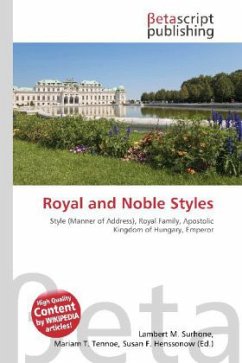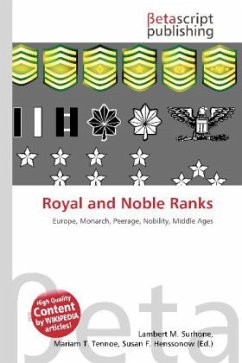Please note that the content of this book primarily consists of articles available from Wikipedia or other free sources online. Styles represent the fashion by which monarchs and noblemen are properly addressed. Throughout history, many different styles were used, with little standardization. This page will detail the various styles used by royalty and nobility in Europe, in the final form arrived at in the nineteenth century. Only those classified within the social class of royalty and upper nobility have a style of "Highness" attached before their title. Reigning bearers of forms of Highness included grand princes, grand dukes, sovereign princes, reigning dukes and princely counts, their families and the agnatic descendants of emperors and kings. Royals (usually emperors to princely counts) are all considered "princes" (German: Fürsten). The styles of members of grand ducal families have been inconsistent. In Luxembourg, more senior members of the family have also been Royal Highnesses, but only due to their status as Princes of Bourbon-Parma (itself an inconsistency as Parma was only ducal, but this family has male-line descent from kings of Etruria, Spain and France).
Bitte wählen Sie Ihr Anliegen aus.
Rechnungen
Retourenschein anfordern
Bestellstatus
Storno








